Welcome to my first proper Fantasy Fridays. For this first one I want to feature one of my favorite fantasy RPGs. It is Jeffrey Talanian's Hyperborea RPG, now in its 3rd Edition.
I keep coming back to this game time and time again for good reason, it is just a fantastic game.
This game has the feel of first Edition AD&D in a "Dying Earth" style setting. It is part Jack Vance's Dying Earth, but a greater part of Clark Ashton Smith's "Zothique." The world is old, cold, and dying.
The first edition was a boxed set of three books, and the second edition was a single massive tome. The third edition is now two separate books.
I have all three and have reviewed them all. I'll throw some links below to the reviews and other characters, here is the the latest, the third edition, which sits nicely on my shelves with my AD&D books.
HYPERBOREA Player's Manual
PDF and Hardcover. 324 pages. Color cover, black & white art with full color art pages.
For my review, I am going to be considering the hardcover from the Kickstarter and the PDFs from DriveThruRPG.
The book starts with the credits, acknowledgments, and dedication to John Eric Holmes, the author/editor of the "Holmes" Basic edition.
Chapter 1: Introduction this covers what this game is and what RPGs in general are. This is important and worth a read since it sets the stage for what sort of sub-genre this game covers, "swords, sorcery, and weird science-fantasy." The classics of Swords and Sorcery are covered here briefly and how they add to the feeling of this game. This is pure Howard, Lovecraft, and Smith.
Chapter 2: Character Generation covers character creation. This chapter is brief covering of what you can do with the five chapters. This also has a listing of the common "facts" known to every character. There is a section on leveling up.
Chapter 3: Statistics or the "rolling up characters" chapter. The six recognizable methods are presented here. The most common of course is Method III; roll 4d6 drop the lowest. We also have the same six attributes we have always had.
Each class has a "Fighting Ability" (FA) and a "Casting Ability" (CA) which relates to attacks. So yes, even magicians can get a little better in combat as they go up in level. It's a great little shorthand and works great. So a 4th level Fighter has a fighting ability of 4. A 4th level magician still only has a fighting ability of 1 and a cleric 3 and thief 3. Subclasses can and do vary.
AC is descending (like old school games), BUT with the Fighting Ability stat it could be converted to an ascending AC easily.
Chapter 4: Classes We still have our Basic Four; Fighter, Magician, Cleric, and Thief. Each also gets a number of subclasses. Fighters get Barbarian, Berserker, Cataphract, Huntsman, Paladin, Ranger, and Warlock. The Magician has Cryomancer, Illusionist, Necromancer, Pyromancer, and Witch. The Cleric has the Druid, Monk, Priest, Runegraver, and Shaman. Finally, the Thief has the Assassin, Bard, Legerdemainist, Purloiner, and Scout.
Each subclass is very much like its parent classes with some changes. The classes look pretty well balanced.

Chapter 5: Background This covers all the things about the character that "happened" before they were characters.
Races are dealt with first. They include Amazons, Atlanteans, Esquimaux, Hyperboreans, Ixians, Kelts, Kimmerians, Lemurians, Picts, and Vikings along with the catch-all "Common" race of man. No elves or dwarves here. Physique is also covered.
Alignment is a simpler affair of Lawful Good, Lawful Evil, Chaotic Good, Chaotic Evil, and Neutral.
Along with race, there are various languages the characters can learn/know. There are also gods here, an interesting mix of Greek, Lovecraftian, Norse, and Smith gods.
There are background skills and weapon skills. Though I misread "charcoaler" as "chocolatier," and now I want a character with this background.
Chapter 6: Equipment Or the "let's go shopping" chapter. If you missed the "to hit modifiers vs. armor types/AC" in AD&D then I have a treat for you. Weapons here are more detailed than they were in previous editions of HYPERBOREA; or at least more detailed than my memory of the older editions. Just checked, this one is much more detailed.
Chapter 7: Sorcery This is our spell chapter but it also covers alchemy. Spells are split up by character class. Spells are limit to 6th level since classes are all limited to 12 levels. Spell descriptions are all alphabetical. This covers about 75 pages.
Chapter 8: Adventure. This chapter improves over the previous editions. It covers all sorts of adventure topics like hirelings and henchmen, climbing, doors, nonstandard actions, time and movement.
Chapter 9: Combat. All sorts of combat topics are covered. Critical hits, unarmed combat, mounted combat and more. Damage and madness are also covered. The madness section is small and not really designed to mimic the real world.
Appendix A: Name Generator. Pretty useful, really, to get the right feel of the game. Afterall "Bob the Barbarian" isn't going to cut it here.
Appendix B: Lordship and Strongholds. What each class and subclass gains as a Lord or Lady of their chosen strongholds. There is a great section on creating strongholds as well.
Appendix C: Cooperative Gaming. This covers how well to play in a group.
Appendix D: OGL Statement. This is our OGL statement.
These appendices (with the exception of D) are all new.
There is also a great index.
So I will admit I was unsure about backing the 3rd Edition of HYPERBOREA. I have the 1st and 2nd Editions and they have served me well over the last few years. This edition brings enough new material to the table that it really is the definitive version of the game.
The leatherette covers are really nice and I am happy I waited for it. Since the Player's and Ref's books are now separate, I could, if I wanted, pick up another Player's book.
The art is great. There are some reused pieces and still plenty of new ones. It uses the art well and helps set the tone of the game.
HYPERBOREA Referee's Manual
PDF and Hardcover. 308 pages. Color cover, black & white art with full-color art pages.
Chapter 10: Introduction Again, this is our introduction this time for the Game Master or Referee's point of view. What the Referee does for the game and more.
Chapter 11: Refereeing This get's into the Game Mastering process in detail. This covers grant experience for the characters and setting up the campaign.
Chapter 12: Bestiary Our monster section and truthfully one of my favorites. The expected ones are here, but there are also plenty of new ones. This covers roughly 130 pages. There are interesting new takes on some classic "D&D" monsters, plus many new ones like a bunch of new "lesser" and "sublunary" demons. The format is most similar to Basic or Labyrinth Lord, and it is full of the usual suspects with some Lovecraftian Horrors, and even remnants of alien and bygone ages. "Demons" are here, but no devils.
Chapter 13: Treasure Covers treasure types and magical treasure. Among the magic items are things like Radium Pistols and other sc-fi artifacts. Very pulpy. It also includes some rules on scribing spell and protection scrolls. There is even a small section on Alchemy in Hyperborea. Very useful to have really.
Chapter 14: Gazetteer. The lands are a pastiche of Howard, Vance, Lovecraft, and Smith. If these names mean anything to you, then you know or have an idea, of what you are going to get here. This section has been greatly expanded from the previous editions. Included here are the gods again and a little more on religion. Basically, you get the idea that gods are either something you swear by (or to) or get sacrificed to by crazy cultists. So yeah, you know I am a fan.
Appendix A: Weather in Hyperborea. Likely more important here than, say, other game worlds. Weather in Hyperborea is dangerous.
Appendix B: Hazards of Hyperborea. There are horrible things waiting for you in Hyperborea and they are not all monsters or the weather.
Appendix C: Waterborne Expeditions. Covers waterborne adventures and combat.
Appendix D: Warfare and Siege. Your characters have built their strongholds. Now someone wants to know it down. Here are the rules.
Appendix E: OGL Statement. The OGL statement for this book.
Since the 2nd edition, nearly every aspect of this game has been expanded, some sections more than others, but it is a great upgrade.
The art throughout is very evocative of the setting. Mighty thewed barbarians, shining knights, elderly and eldritch wizards.
Larina Nix for Hyperborea 3rd Edition
A dedicated witch class? Yes please! That means I want to try out Larina here. Now I have tried other witch characters with the Hyperborea rules, but to build my iconic witch is something of a full test for me and a game.
Larina Nix
Female Kelt Witch 12th level
Alignment: Neutral (Lawful)
ST 9 [+0 +0 2:6 4%]
DX 12 [+0 +0 3:6 4%]
CN 12 [+0 +0 75% 2:6 4%]
IN 18 [+3 95%, Bonus Spells 1, 2, 3, 4]
WS 18 [+2]
CH 18 [+3 12 +1]
Age: 30s
AC: 1 (Cloak of Darkness, Bracers of Defense)
HD: d4
hp: 27
FA: 5
CA: 12
#Attacks: 1/1
Damage: 1d4+3 (dagger+3), 1d6 (staff)
SV: 11 (+2 Transformation, +2 Sorcery)
ML: 12
AbilitiesAlchemy, Brew Decoction, Familiar, Read Magic, Scroll Use, Scroll Writing, Sorcery, Dance of Beguilement, Effigy, Henchmen, Broom Enchantment, Ladyship, Witch's Apprentice
Spells
First level (5+1): Charm Person, Detect Magic, Mending, Shocking Grasp, Sleep, Write Spell (Charm Person in ring)
Second level (5+1): Bless, Extrasensory Perception, Hold Person, Identity, Ray of Enfeeblement, Shatter, (Ungovernable Hideous Laughter in ring)
Third level (4+1): Dispel Magic, Phantasm, Tongues, Witch Fire, Wind Wall, (Starlight in ring)
Fourth level (4+1): Gylph of Warding, Moonlight, Mirror Mirror, Sorcerer Eye, (Transfer Wounds in ring)
Fifth level (3): Anti-magic Shell, Control Winds, Shadow Conjuration
Sixth level (2): Control Weather, See
Languages: Common, Keltic (Goidelic), Hellenic (Greek), Old Norse, Speak with the Dead, Speak with Nature Spirits
Size: M (Height: 5'4", 125 lbs)
Move: 40
Saving Throw Modifiers: Transformation +2, Sorcery +2
Secondary Skill: Scribe
God: Lunaqqua
Flying Cat ("Cotton Ball"): AL N; SZ S; MV 10 (Fly 80); DX 15; AC 7; HD 1/4 (hp 5); #AT 3/1 (claw, claw, bite); D 1/1/1; SV 17; ML 5; XP 11
Normal GearClothing, daggers (2), backpack, woolen blanket, chalk, ink and quill, polished steel mirror, incendiary oil, parchment (4), soft leather pouch (2), small sack (2), tinderbox, torches (2), wineskin (wine), writing stick, iron rations (one week), spellbook (contains all prepared spells), 5 gp, 15 sp, gems (100gp)
Magic Items
Bracers of Defense, Ring of Spell Storing (4 spells), Ring of Telekinesis (100 lbs), Wand of Magic Missiles, Wand of Lightning Bolts, Bonded Broom, Cloak of Shadows, Gem of Brightness, Horn of Blasting (Thor), Copper Skull Necklace
I like this version. So who is this Larina? This is Larina at the End of Time. She has all the memories of her past lives and often gets lost in them. Not really remembering who, or when, she is. She lives alone in her witch's cottage with her, yet unnamed apprentice. This is not the Witch-Queen Larina, this is something lesser and far older.
She would make for a great NPC for the next time I run this game.
Who Should Play This Game?
Anyone that enjoyed First Edition AD&D but liked the level limits of B/X D&D. Humans abound here, so if you like playing anything other than a human, you might not have as much fun. Also, the world is bleak and dying. This is not a time of heroes to make for a better day; better days are past. This is a time to survive against brutal odds and in the face of an uncaring universe.
Also, play this if you loved the works of Jack Vance, H.P. Lovecraft, and especially Clark Ashton Smith.
There is also a pretty good online community for this game, so support and advice are often a click or two away.
This is one of the games that I play the least but want to play the most. I love everything about it. It combines so many of my favorite things in one game that I am hard pressed to think of something I would have done differently. Well...maybe go to level 14 so I could map it onto my Basic-era games plans a bit better.
Links


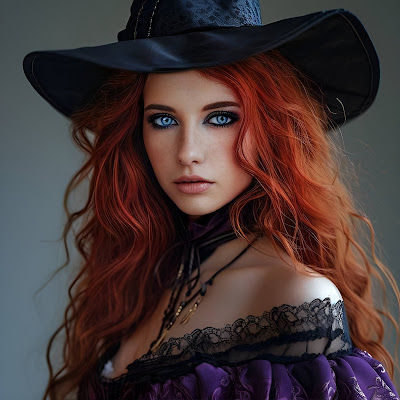



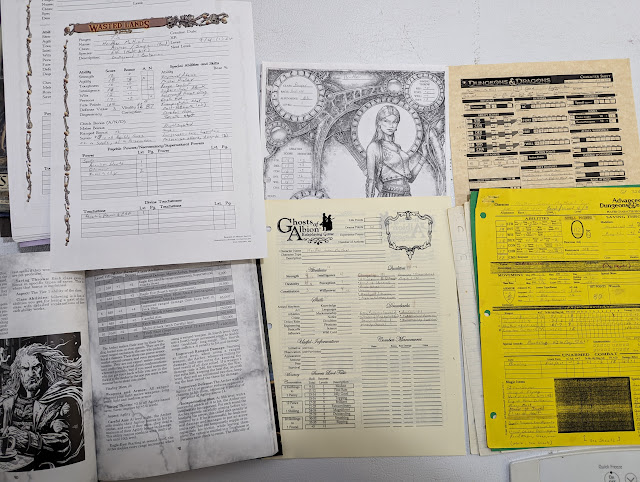

















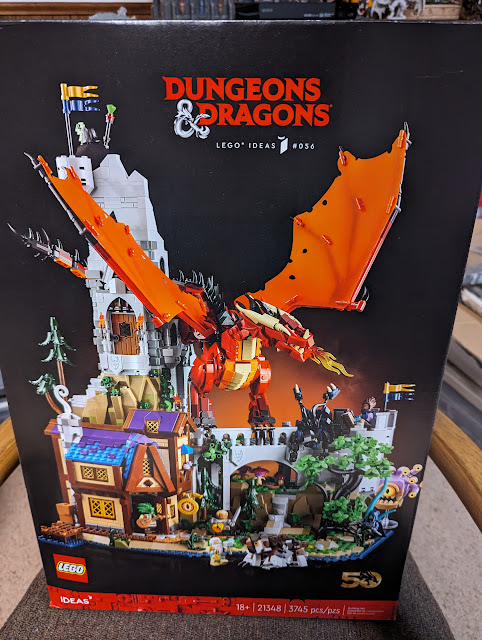

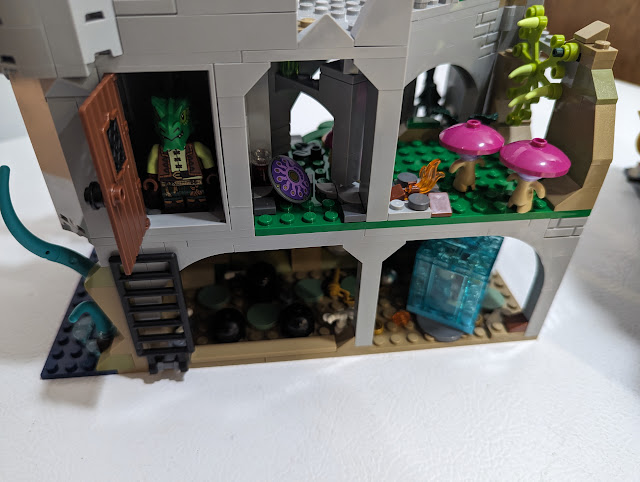




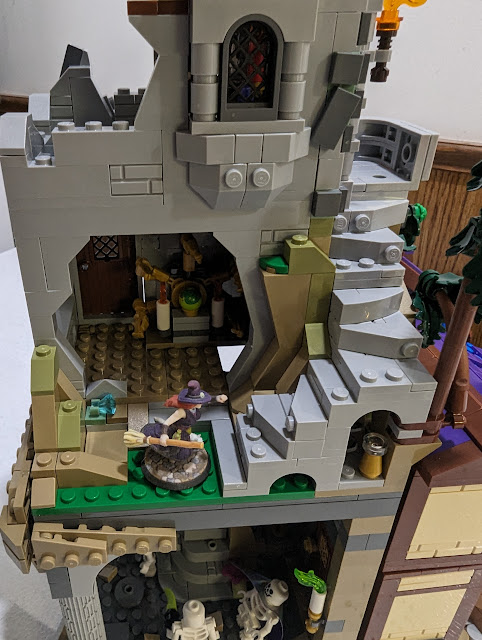




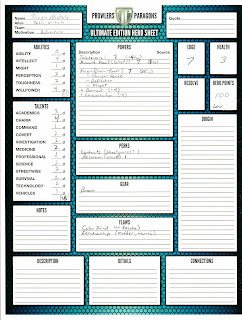






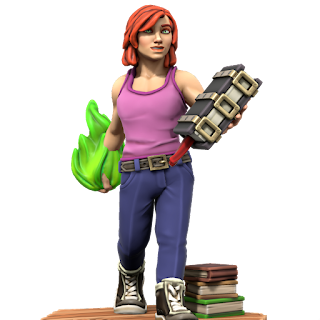

.png)







